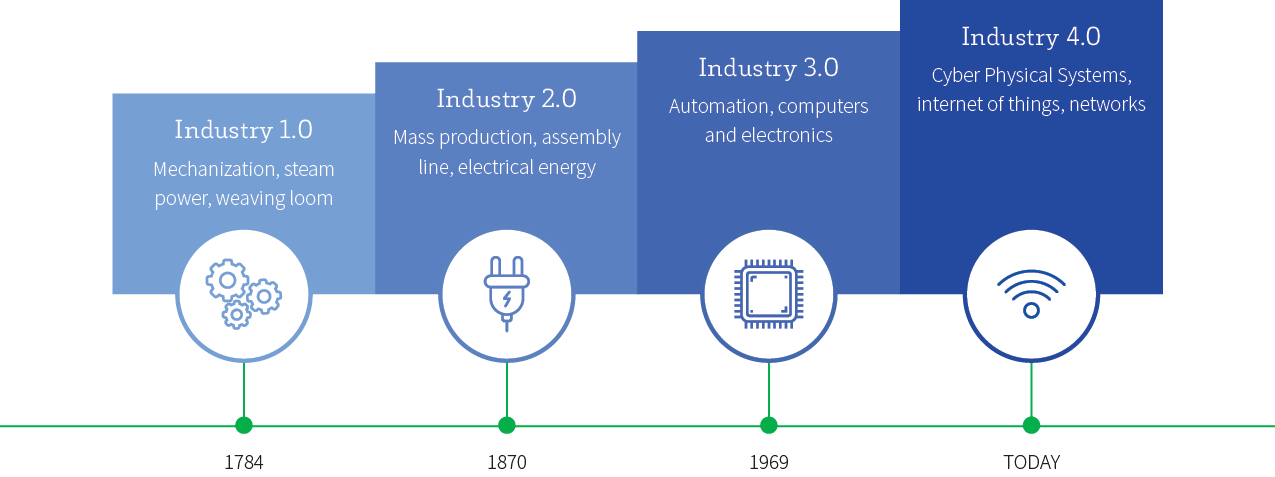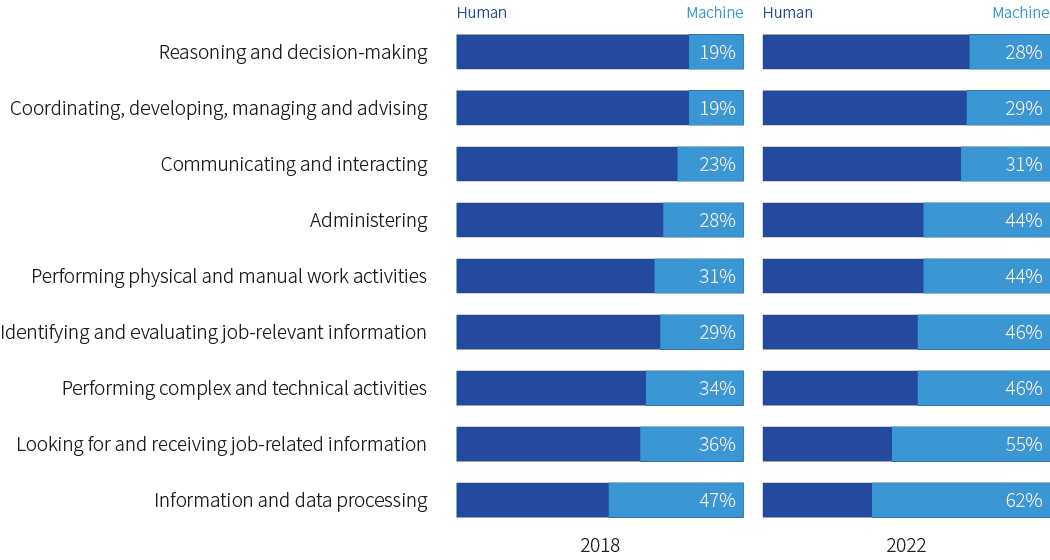Continue Reading
Talent as a Priority in Any Era of Technology
History always seems to repeat itself. In the late 18th century, steam changed the world forever. It was harnessed for power that could fire pistons, a feat of engineering that became a hallmark of the Industrial Revolution. This radically transformed nearly every aspect of life—in particular, creating an unprecedented demand for workers with new skills to transition into a modern economy.
Over two centuries later, we find ourselves at the forefront of a similar, yet far more complex transition. As we enter the Fourth Industrial Revolution—spurred on by rapid digitalization—it’s evident that nearly every aspect of human life will be transformed yet again. In fact, it’s already happening.

Machine learning algorithms, artificial intelligence, augmented and virtual realities, and robotics technologies have begun to usher in a new world economy that threatens to leave many workers underskilled and unprepared. One can’t help but wonder: in terms of job skills, how will humans keep pace with their inorganic counterparts?
Actually, finding and hiring top talent to help companies keep pace with innovation is already a pain point for many business leaders. Studies show that 77% of CEOs see hiring for key skills as the biggest threat to their businesses and 82% of Fortune 500 companies don’t believe they’re in a position to recruit highly talented candidates. Furthermore, 83% of HR professionals in the U.S. have reported difficulty recruiting qualified candidates in the past year and 52% say the skills shortage has worsened over the last two years.

Additionally, according to a Korn Ferry report, by 2030 there will be a global human talent shortage of more than 85 million people, a deficit that will be felt across all industries.
If these patterns continue, it will come at a significant cost.
The Future of Work and Its Impact on Recruiting
According to the 2018 Future of Jobs Report from the World Economic Forum (WEF), an average of 71% of total work hours were performed by humans in 2018, compared to 29% by machines, as measured across 12 industries. By 2022, this average is expected to have shifted to 58% work hours performed by humans and 42% by machines.
Ratio of human-machine working hours, 2018 vs. 2022 (projected)

However, with innovation comes the demand for new skill sets and roles to be filled. The WEF’s research also predicts that the role of talent acquisition will play a critical role in filling the 133 million new roles that will emerge over the next few years, facilitating “the new division of labour between humans, machines, and algorithms.”
Examples of stable, new and redundant roles — all industries
- Managing Directors and Chief Executives
- General and Operations Managers*
- Software and Applications Developers and Analysts*
- Data Analysts and Scientists*
- Sales and Marketing Professionals*
- Sales Representatives, Wholesale and Manufacturing, Technical and Scientific Products
- Human Resources Specialists
- Financial and Investment Advisers
- Database and Network Professionals
- Supply Chain and Logistics Specialists
- Risk Management Specialists
- Information Security Analysts*
- Management and Organization Analysts
- Electrotechnology Engineers
- Organizational Development Specialists*
- Chemical Processing Plant Operators
- University and Higher Education Teachers
- Compliance Officers
- Energy and Petroleum Engineers
- Robotics Specialists and Engineers
- Petroleum and Natural Gas Refining Plant Operators
- Data Analysts and Scientists*
- AI and Machine Learning Specialists
- General and Operations Managers*
- Big Data Specialists
- Digital Transformation Specialists
- Sales and Marketing Professionals*
- New Technology Specialists
- Organizational Development Specialists*
- Software and Applications Developers and Analysts*
- Information Technology Services
- Process Automation Specialists
- Innovation Professionals
- Information Security Analysts*
- Ecommerce and Social Media Specialists
- User Experience and Human-Machine
- Interaction Designers
- Training and Development Specialists
- Robotics Specialists and Engineers
- People and Culture Specialists
- Client Information and Customer Service Workers*
- Service and Solutions Designers
- Digital Marketing and Strategy Specialists
- Data Entry Clerks
- Accounting, Bookkeeping and Payroll Clerks
- Administrative and Executive Secretaries
- Assembly and Factory Workers
- Client Information and Customer Service Workers*
- Business Services and Administration Managers
- Accountants and Auditors
- Material-Recording and Stock-Keeping Clerks
- General and Operations Managers*
- Postal Service Clerks
- Financial Analysts
- Cashiers and Ticket Clerks
- Mechanics and Machinery Repairers
- Telemarketers
- Electronics and Telecommunications Installers and Repairers
- Bank Tellers and Related Clerks
- Car, Van and Motorcycle Drivers
- Sales and Purchasing Agents and Brokers
- Door-To-Door Sales Workers, News and Street Vendors, and Related Workers
- Statistical, Finance and Insurance Clerks
Source: Future of Jobs Survey 2018, World Economic Forum
Note: Roles marked with * appear across multiple columns. This reflects the fact that they might be seeing stable or declining demand across one industry but be in demand in another.
In summary, the war for talent is here and the companies that will survive are the ones that can effectively attract, select, and hire top-tier talent. And, if you’re an HR or TA leader, you can help your organization do so through the principles and metrics of Hiring Success.